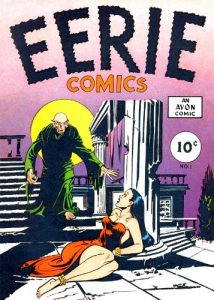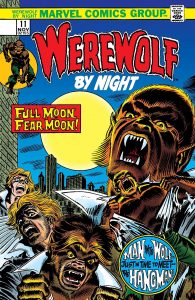The summer before my senior year of high school I was a camp counselor for a group of 8-year-old boys. I’d occasionally take the boys to a small side camp a couple clicks away from the main camp to sleep overnight in teepees. It was perfect for telling scary stories around the campfire.
I’ll never forget one of those nights. Most boys would get a fright, scream, then begin to laugh nervously as they realized I was pulling their leg. But the look on one kid’s face has been seared into my memory ever since…
He was genuinely scared to death.
As everyone else laughed nervously, I saw that little guy start to tremble. I knew in that moment that I was an a@@hole. What was a goofy story for a 17-year-old was a legitimately frightening moment for an 8-year-old. Whereas I had the maturity at age 17 to handle the abstract thinking of a horror tale, I lacked the wisdom to understand that it was too much for 8-year-olds to process effectively.
I had scarred him. He didn’t sleep well the rest of the week and avoided looking at me.
To this day, I still genuinely feel awful for scaring that kid so badly and I think I shared this story in large part because I needed to get that off my chest, admitting what a thoughtless jerk I can be at times.
Early Pre-Marvel Horror Comics
Horror has long been a part of popular culture. What began as scary stories around campfires became Mary Shelley stories, Alfred Hitchcock, then the Exorcist, when they really wanted to cause hysteria. And comic books in large part drove that tradition of horror in popular culture.
Horror comic books thrived in the 1940s and into the 1950s. Horror comics began with stuff like adaptations of The Legend of Sleepy Hollow and Frankenstein. Then Eerie #1 was published and it is considered by many as “the first out-and-out horror comic book” with a cover that featured a red-eyed, pointy-eared fiend threatening a beautiful young woman in a scanty red evening gown who was bound by ropes.
Eerie was an anthology that offered six occult stories that involved ghosts and zombies, one of them – The Man-Eating Lizard – being drawn by a young Joe Kubert.
Nearly a quarter of all comic books published were horror titles by 1953. This raised concerns over content and its impact on children, which gave rise to the Comics Code Authority, whose presence resulted in the toning down of horror comics. (But black-and-white horror magazines did not fall under the Code, so they, in turn, flourished from the mid-1960s through the early 1980s.)
But mainstream comic books experienced a horror resurgence in the 1970s when the Comics Code was loosened a bit. And it is many of these 70s Marvel horror comics that are still remembered fondly decades later.
Marvel Horror Comics
Early Marvel horror comics were titles like Monsters on the Prowl, Creatures on the Loose, and Fear. Then Fear morphed into Adventures into Fear and began featuring recurring characters like Man-Thing and Mobius, the Living Vampire.
Werewolf by Night was also a popular title at this time and ran for 43 issues. (Issue 32 famously introduces Moon Knight.) The character first appeared in Marvel Spotlight #2 (Feb 1972) and was created by Roy Thomas. The series name was suggested by Stan Lee and Gerry Conway and Mike Ploog became the creative team.
During Werewolf by Night’s run, Marvel editors couldn’t resist the opportunity to assign one of their most popular writers, Marv Wolfman, to write some stories for the series with a playful note: “At last — WEREWOLF — written by a WOLFMAN.”
Wolfman’s Werewolf by Night story goes like this: A masked vigilante calling himself the Hangman saves a young woman from the aggressive behavior of a strung-out junkie. After driving the blade of his scythe into the man’s back, he brings the woman back to his secret lair. Although he claims that he is protecting her, in truth, he is actually keeping her in a dungeon.
That evening, Jack transforms into the Werewolf and comes upon his friends Lissa and Buck Cowan. Unfortunately, the Hangman assumes the worst from the Werewolf and dives between Lissa and the Werewolf with the intent of saving her from the beast. The Werewolf and the Hangman exchange blows with one another, but ultimately, the villain manages to ensnare Jack with his noose.
It was a great tale that appeared in Werewolf by Night #11.
Tomb of Dracula was was an important comic during that era as well. Tomb of Dracula brought Bram Stoker’s classic horror character into Marvel’s continuity that was thriving at this time under the stewardship of Stan Lee. Spider-Man and the X-Men might encounter Dracula, plus vampire hunters like Blade were introduced into the shared universe.
One more interesting thing was happening in that era as well. Journey into Mystery and Strange Tales weren’t fully horror titles, but they certainly ventured into the occult, featured ghastly creatures, and contain thrilling elements.
But, as you might already know, Thor was introduced as a character in Journey into Mystery and became a fan-favorite. Marvel then converted that title to tell only Thor stories. Strange Tales was converted into Nick Fury and Doctor Strange stories, only to later end its run with the occult-laden Brother Voodoo.
Marvel Horror Comics: On the Prowl
By 1980 the comic book market has drifted away from horror for the most part. Superheroes in a shared universe soared in popularity, so the horror characters of the previous decade appeared only as cameos in superhero titles.
But that doesn’t mean that 1970s horror comics weren’t awesome. The Comics Code is mocked today and silly, fringe anecdotes are shared in order to fortify the mockery. But that conveniently leaves out the good that the Comics Code provided.
The Comics Code served to mitigate the gorier and more disturbing elements of comics aimed at kids. The Code kept 70s Marvel horror comics at a soft PG-13 rating, a level most parents could get behind. So, while the stories were still thrilling and startling, and filled with characters and creatures that captured the imagination, they weren’t so gruesome that they’d make an 8-year-old wet himself in a teepee at summer camp.
And that brings us back to where we started this article: I’m so sorry, little dude. I didn’t mean to scare you to death in that teepee with that horror story. I was a 17-year-old kid who has read too many horror comics. You were just a kid who was young enough he still needed the Comics Code and I wasn’t wise enough at the time to realize that.



